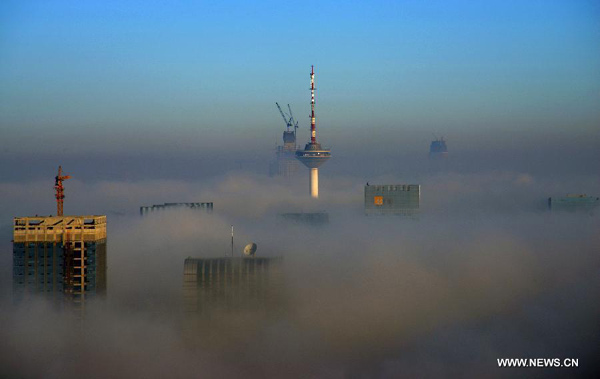Record smog in October shut down Harbin, a city of 11 million people in Northeast China. Officials blamed the poor air quality on increased coal consumption during the first days of winter heating, underscoring the urgency of implementing the State Council's recently announced action plan to address air pollution.

Tops of buildings are seen in fog-shrouded Shenyang, capital of northeast China's Liaoning Province, Oct 30, 2013. [Photo / Xinhua]
But while the Air Pollution Control Action Plan has ambitious goals to cut air particulates and coal consumption it may put additional pressure on the country's water supply.
The plan aims to reduce particulate matter in the North China Plain by 25 percent and reduce coal's share in the national energy mix to 65 percent by 2017. One of the plan's key recommendations is to replace coal with cleaner natural gas, including synthetic natural gas converted from coal.
However, converting coal to natural gas is an extremely water-intensive process. The plants require water for cooling, production, and the post-production removal of contaminants. One cubic meter of synthetic natural gas requires 6 to 10 liters of freshwater to produce. So in an attempt to control urban air pollution in the East, China might jeopardize its water supplies elsewhere.
As of September, the Chinese government had approved 18 large-scale synthetic natural gas plants with a total capacity of 75.1 billion cubic meters per year; most of them located in arid and semi-arid regions in the Xinjiang Uygur and Inner Mongolia autonomous regions. Operating at full capacity they will consume a total of 500 to 700 million cubic meters of freshwater a year. That's almost 20 percent of the region's total industrial water use in 2011. The plants will therefore significantly exacerbate stress in areas already experiencing chronic water shortages.